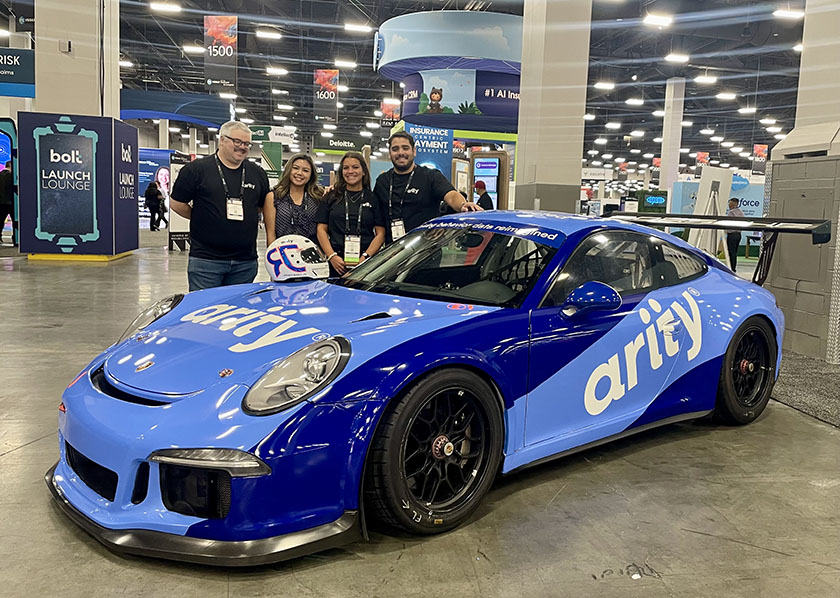5 ways to “turbo-charge” auto insurance telematics Read article


Telematics programs have been around for some time. Most drivers know, to some extent, about their vehicle’s on-board diagnostics (OBD-II) systems, and how they store data from the vehicle, like maintenance issues.
But OBD-II devices, when leveraged for telematics programs for insurance companies, have a logistics problem: they’re difficult to physically set up and it’s difficult to get permission to use them from the policyholder. Not to mention they are traditionally discount-only programs, so the benefits for both parties have been limited.
That all changed when mobile telematics service providers arrived. The logistics of setup is simple. And consumers’ willingness to opt into a telematics program has been growing steadily, at about 3% year over year.
In fact, this past year, Arity research shows that consumers’ perceived comfort in using certain telematics data to influence insurance pricing has jumped an astounding 15%, to about 50% of drivers feeling very or extremely comfortable with it.
This is great news, because insurance carriers are becoming savvier to telematics’ potential, and have started leveraging this data not only for discount programs but also for surcharging and pay-per-mile programs and developing driving scores.
We imagine that this data will also have a positive effect on distracted driving. And we are watching as telematics evolves and drives changes in transportation.
More and more insurance companies are adopting telematics programs. Progressive’s Pat Callahan says that telematics “has continued to be our single most predictive rating variable.” Tom Wilson from Allstate said in late 2018, “You should expect the penetration [of telematics] to go up.”
Why leverage telematics? Here are a few common reasons:
What’s more, the take-rate of these telematics programs for good drivers is 30-75%; the higher numbers being when the agent is well educated or trained in making the offer. This means good drivers want these programs, but they might not be offered frequently enough or explained well enough.
Once drivers opt into a program, retention of these drivers improves by 5-10% compared to traditional retention methods. That may likely be because premiums for good drivers decrease by 30% or more. This is a win-win: policyholders save money when they are good drivers and insurance carriers are exposed to fewer losses.
In fact, with a telematics program, the loss ratio improvement looks to be about 10% better than traditional methods.
In 2017, Larry Thursby of Nationwide said, “The real penalty will come from those who choose not to use onboard telematics … [they will] ultimately see their base rate level likely inflate.”
For example, when Progressive uses surcharging to incentivize risky drivers to be safer, they are also causing these drivers to go out and find different insurance services. In effect, the act of surcharging is pushing risky drivers out to competitors. If these competitors don’t have the insight into driving behaviors via telematics, they will not know they are acquiring more risk.
We know that Allstate, Progressive, and Nationwide are already leveraging telematics. Now another huge player has entered the field: GEICO. GEICO is a major disruptor to the whole telematics field, because of its size. Many insurance carriers prefer to let the big companies test out new systems first; and if a company like GEICO isn’t doing it, they feel like they don’t have to either.
Now though, more insurance companies will have to start paying more attention to telematics programs. Especially because GEICO is educating the public about what is possible, and consumers will soon expect these services from all insurance carriers.
Consider this: GEICO launched the summer of 2019; since then, 6 of the top 10 carriers have taken more aggressive rate action with their telematics programs by increasing both discounts and surcharges.
Consumers are beginning to understand that they have options and that their insurance policies should reflect their ever-changing needs.
Not only are more insurance carriers offering telematics programs and leveraging them more fully, but consumers’ behaviors and expectations are also changing — presenting new insurance industry challenges.
Mileage may have decreased dramatically in March 2020, but it started to increase again in late April. Arity’s researchers don’t expect U.S. drivers to fall back into some of those historical commuting and driving patterns that we have seen for the last couple of decades.
What’s more, shopping behaviors are changing. For example, people who are currently shopping for insurance will switch at double the rate as pre-COVID-19.
Why are they switching? Arity analysts have determined that consumers want these three things from service providers:
It’s easy to explain what consumers want and that telematics can help provide it, but starting a program from scratch presents new insurance industry challenges.
At Arity, we see three main challenges to getting started: adoption, operation, and iteration. The good news is, that they are all surmountable.
For a mobile telematics program, Arity research shows about a 50% take rate on average when offered, but oftentimes, it is not offered at all. When it is suggested as a benefit to a driver, the take rate can be as high as 75%.
This tells us that stakeholder engagement is VERY important for adoption. Agents need education on what’s involved in the process as well as the value proposition to them and their potential policyholders.
Younger consumers, the more tech-savvy, and price-sensitive people tend to raise their hand and say, “I would be interested in a telematics program,” and it may be that currently, agents are mostly responding to those people only. Arity research shows that interest is much larger than this narrow demographic.
Dedicated resources
At Arity, we find that our customers who have dedicated in-house resources — budget, time, and resources — to deploy a telematics program are most successful. This means there is someone in-house who is in charge of making it successful.
Features beyond pricing
Implementing any new technology system raises insurance industry challenges, especially if pricing is the primary use case. But pricing is only one consideration of selecting any tech solution; what else is important to the business?
Tech sophistication
Another operational distraction can be upgrading policy administration systems.
Depending on resources, this can take six weeks to six months.
Customer use
Once up and running, the customer must understand, use, and appreciate the system. How will this take place?
Customer behaviors are changing at break-neck speed, and the quantity of incoming data from a telematics program is tremendous. As examples:
This is a lot for any company to accept, absorb, and leverage to help improve the policyholder’s experience. But understanding advanced data helps companies meet evolving insurance industry challenges.
Insurance companies must understand and accept the fact that the customer experience and the data will change over time. They need to leverage the data to learn and iterate on their programs, and they need a solid process to accomplish this.
A digital data-driven connection to customers allows insurance carriers to essentially change the insurance relationship, and to really differentiate and add to their services.
Once connected, companies can this data to truly determine personalized pricing and coverage based on individual exposure and needs.
Deciding to implement or double down on a telematics program is a big decision and one that involves a lot of resources in a company. We’ve created this short list of quick benefits insurance companies can experience to help support this important step in an insurance company’s evolution:
With a telematics program, insurance carriers can respond to insurance industry challenges by getting new programs to market faster, learning what consumers need, and iterating on their offerings.
Learn more about our auto insurance solutions.